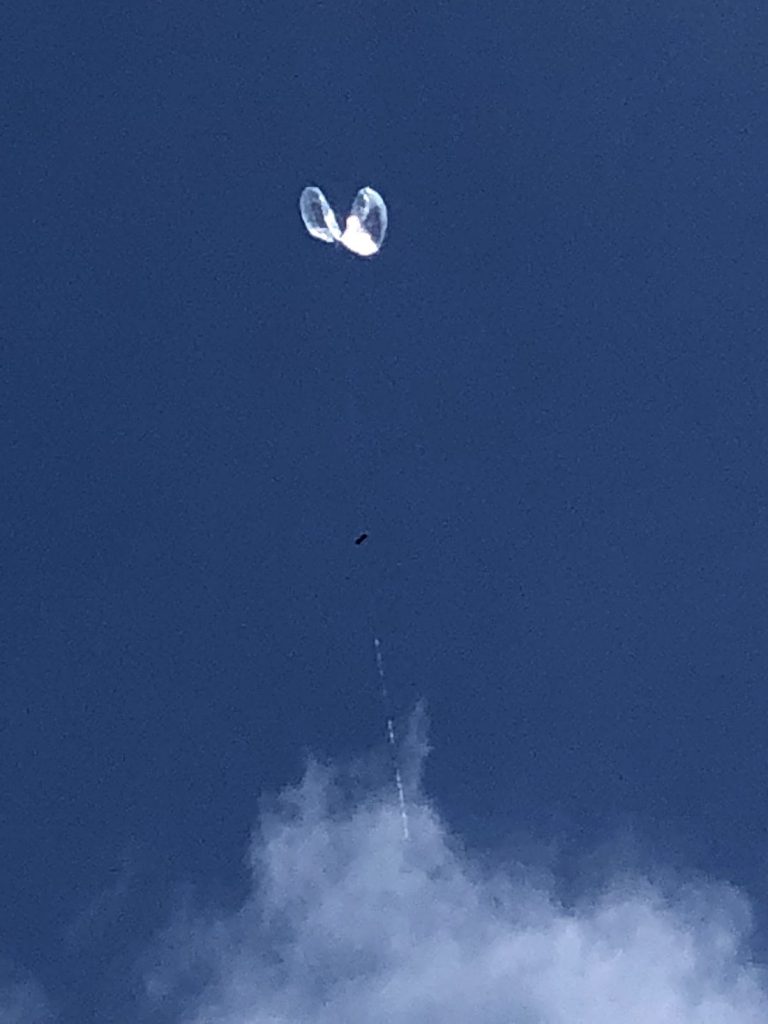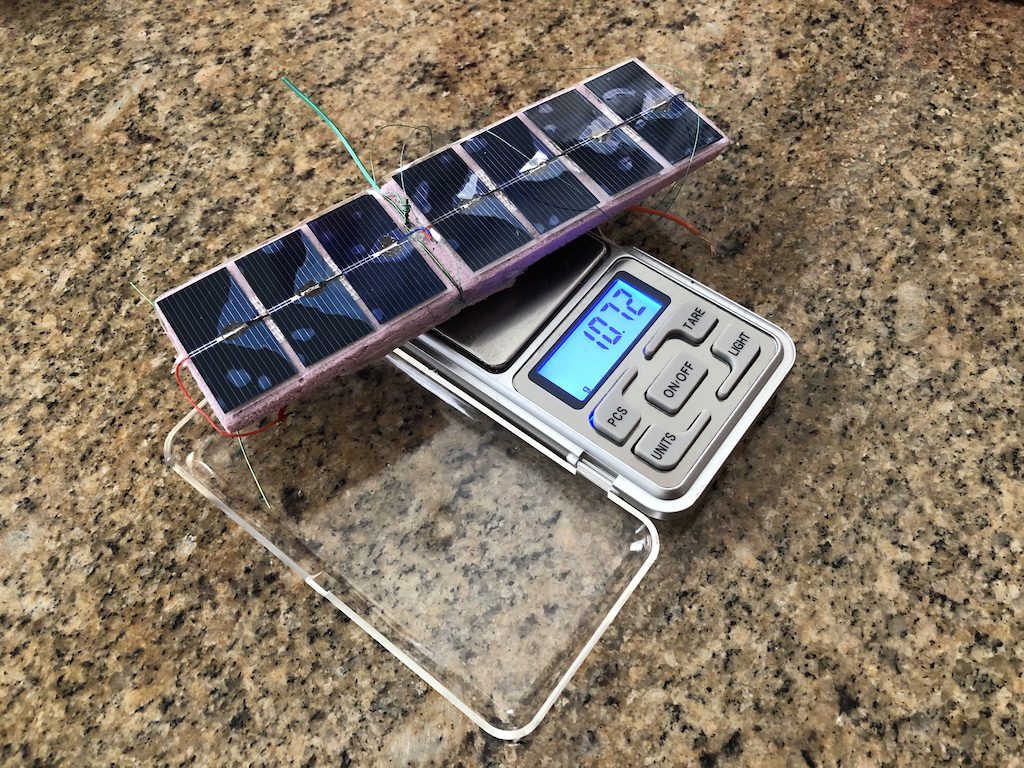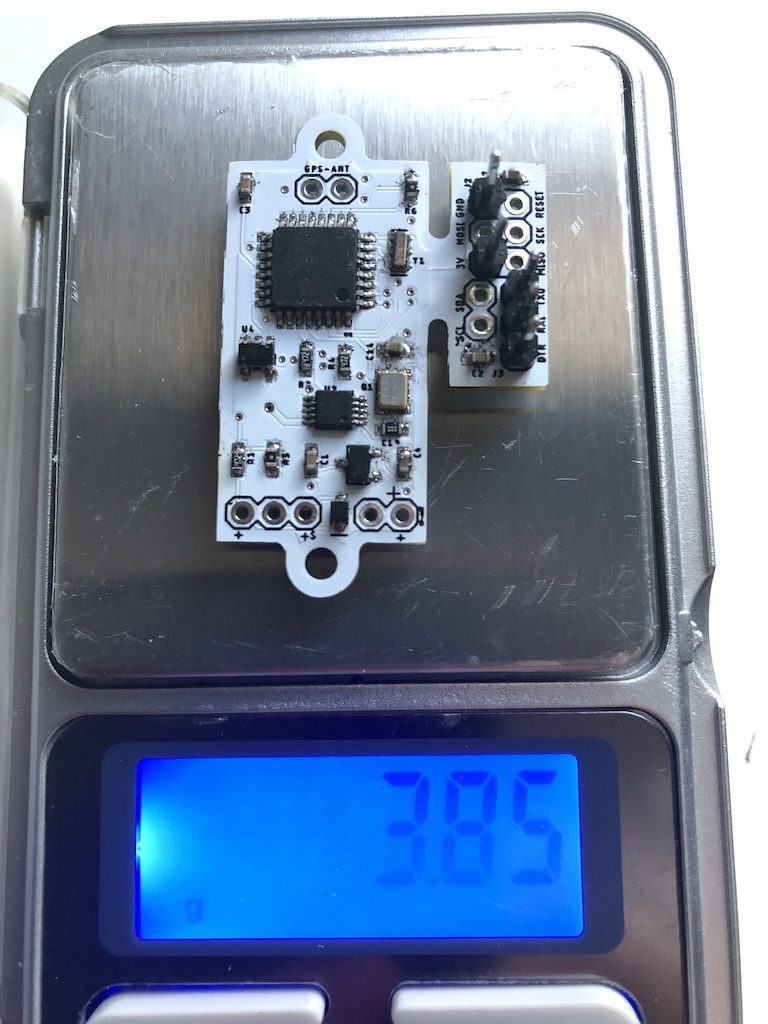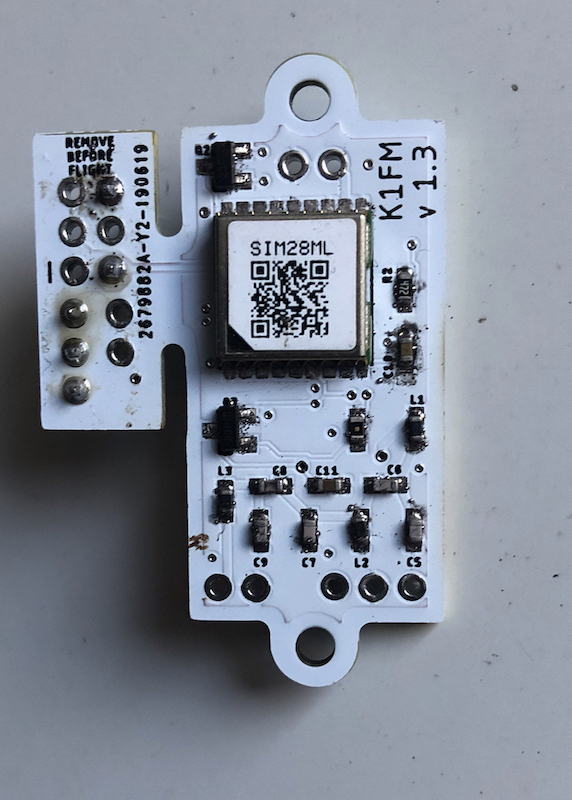Once again in Italy, once again at the beach. The weather was a bit cold but propagation warmed me up good.
Heard a lot of US stations but couldn’t make the pile-up. On the other hand, I had the pleasure of a QSO with OH73ELK.
Author: Alain
K1FM-3 Launch
During my 2019 xmas holiday I took the occasion to launch again in Italy. Unfortunately I made the mistake of loading too much gas and, as a result, one of the two lift balloons popped shortly after take off.
The silver lining of this short-lived launch is that I think I found my definitive construction style.
The think food foam sheet I used is useful to provide some mechanical resistance to the solar cells and also to keep the transmitting electronics a bit warmer.
I have a feeling that next launch is going to be much, much longer!
K1FM Pico Balloon Launch !

After months of research and preparations, it finally happened: last Sunday September 22nd, together with my wife and with Joe N2DI we launched my first pico balloon.
The unit currently transmitting uses Joe’s callsign N2DI. We actually launched another one with mine own callsign but unfortunately its antenna got twisted and, because of that, it could only be heard at a very short distance. Here are some pictures, and here are all the position reports we received so far:
The balloon last flew over Miami where it sent a CW message that was recorded using a remote SDR receiver.
More details to follow!
K1FM Pico Balloon – Part Three
The Balloon payload is finally finished, and practically ready to fly (I need to solder a capacitor at the bottom, but that’s a one minute job).
For the software I ended up forking and modifying OrionWspr, which I renamed GeminiWspr. As it is now, the beacon will transmit on every available WSPR slot after doing GPS calibration on startup and recalibrating every 20 minutes. On minutes 00 and 30 the beacon will also transmit a CW telemetry message on 14.099 MHz.
Power is supplied by 7 solar cells, providing about 3.6 volt. A 1F supercapacitor, fed by a low voltage dropout diode, is applied to guarantee a minimum of power continuity. Current is plentiful, to the point I could have actually split those cells in half. That is somethings others have managed doing but when I tried I shattered the cells each time. I’ll need to ask around for next time.
Here is the finished payload:

I must admit that it seems a bit heavier than I have originally planned for, especially after considering that the actual board (after removing the disposable header) weights just 2.81 grams.
Finding lift gas has been a challenge. The logistics of gas procurement, storage and transportation to the launch site aren’t trivial when you live in a big city apartment and you do not have a car. Long story short: I had to forget about Hydrogen and reverted to Helium.
I am now waiting for a launch window.
Great progress with the Pico Balloon project!
The latest release (version 1.3) is 4 layers and weights around 3 grams when printed on a 1.6mm PCB (can further be reduced in the future). It also have some interesting new features: allows self-calibration, can measure its own power supply and has an onboard temperature sensor. Here it is:
Version 1.3 is definitely airworthy and can be used for an actual launch. Schematics and board layout are now available on GitHub: https://github.com/adecarolis/K1FM-Pico-Balloon
On the software side, I might use OrionWspr by Michael Babineau which now supports my board. As an alternative, a simpler version I am developing could also be deployed.
The part I am still wondering about is power. Contrary to my initial understanding, it is, after all, possible to avoid using batteries (or super-capacitors) and power the balloon by solar panels only. That would require somewhat larger panels (probably around 6 or 7 grams) that could generate enough current for the board to run under direct sunlight.
An alternative option is to use lighter panel s (1.5 grams or even less) that feed a power charger which in turn charges a 1.5 Farad (5 grams) super-capacitor. Finally, there is the possibility of using lighter panels which directly drive a capacitor without using any chargers. This raw method seems to be preferred by other balloonists but I still don’t have a solution for it.
We’ll see what happens on my next post.

